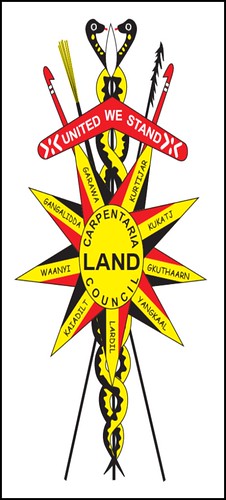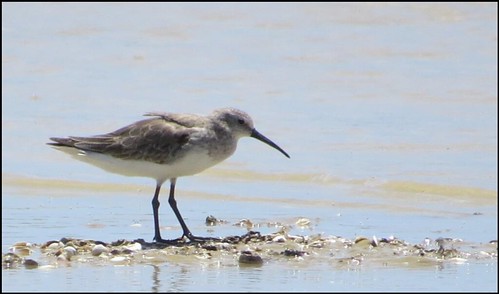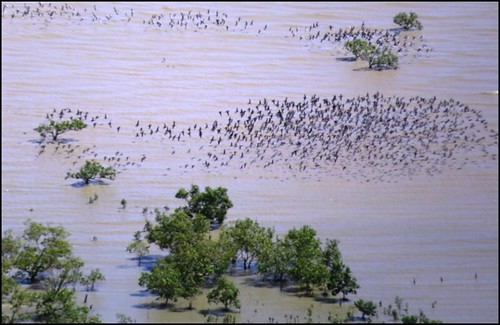by Carpentaria Land Council Aboriginal Corporation (CLCAC)

Logo of CLCAC
A recent initiative by Morr Morr Pastoral Company (Delta Downs) and the Kurtijar people has brought international recognition to the South-East Gulf coast. This has highlighted connections migratory birds make between the Arctic, where they nest, and northern Australia, where they travel after breeding.
Every year, about 30 species of wild bird –wading shorebirds such as the Eastern Curlew, Black-tailed Godwit and Great Knot – make a 20,000 km round trip from far northern Asia and Alaska to Australia. They are among several million travelers on the East Asian – Australasian Flyway.
These amazing creatures are mostly under 500 grams in weight: the smallest averaging 25gm and the largest 900gm. They power their migration flights using extra body fat gained from feeding on small crabs, shellfish and worms in rich tidal mud and sand flats such as those stretching continuously from the Gilbert River mouth to the Eight Mile Creek Fish Habitat Area located west of Burketown.
However, all is not well for these shorebirds. Along the Flyway and especially in the Yellow Sea region (China, Korea) where they must stop and ‘refuel’, vital habitat has been lost. In some areas only one third of their habitat remains and huge sea bays have been filled in for industries, cities and agriculture. Thankfully, the Gulf coast does not have the immense human populations or economic developments of Asia, and these areas play a key role in the life cycle of migratory shorebirds.
Protection of shorebirds in the Flyway has now taken a step forward with the inclusion of 43 km of coast (south from Pelican Island) on Delta Downs [EAAF120] in the Flyway Site Network.
The Flyway partnership is an informal non-binding arrangement that places no restrictions on continuing enterprises but encourages wise land-use, through the partnership of governments and international conservation organisations and business corporations.
Designation of this new Flyway Network Site resulted from cooperation between the CLCAC Normanton Rangers and professional and amateur ornithologists (people who study wild birds). From survey data collected by the Queensland Wader Study Group they identified that the Site is internationally important for five shorebird species and supports over 20,000 birds. Carpentaria Shire Council and the State and Federal Governments supported the nomination.
The designation has served the interests of landholders at Delta Downs and the wider conservation community in Australia and along the Flyway. The landholders and Traditional Owners are striving to run a sustainable cattle enterprise and at the same time protect the natural resources of land and sea country.
It is anticipated stakeholders will collaborate to build connections between people who manage shorebird habitat along the Flyway. Greater awareness of the part that Gulf country plays in the wider world – in the migration Flyway – will surely grow pride in the biodiversity that we have and enthusiasm for looking after it well.

 Above Photo: Curlew Sandpiper on the Bynoe-Flinders coast
Above Photo: Curlew Sandpiper on the Bynoe-Flinders coast
Below Photo: Black tailed godwits flying on the Bynoe-Flinders coast
© Roger Jaensch of Jaensch Ornithology and Conservation




